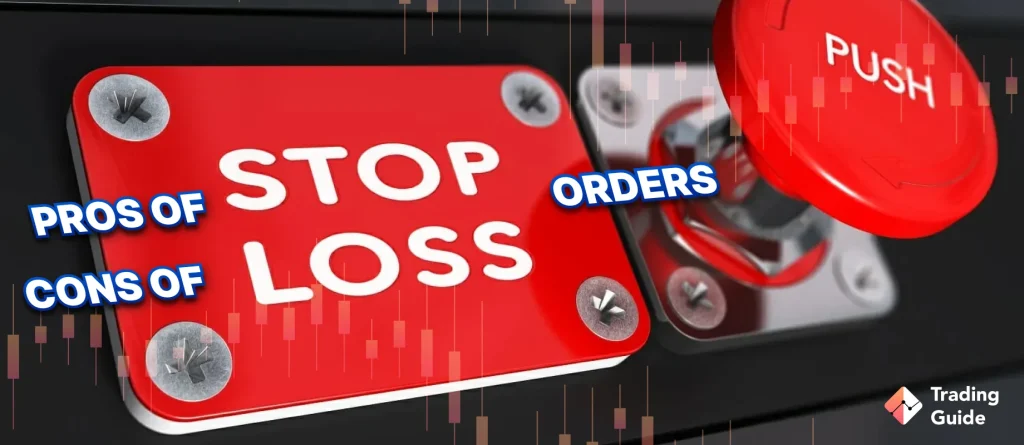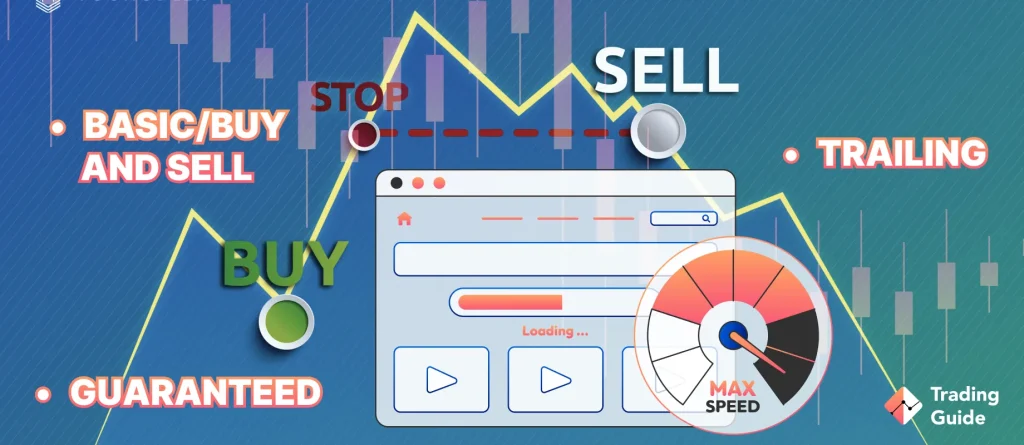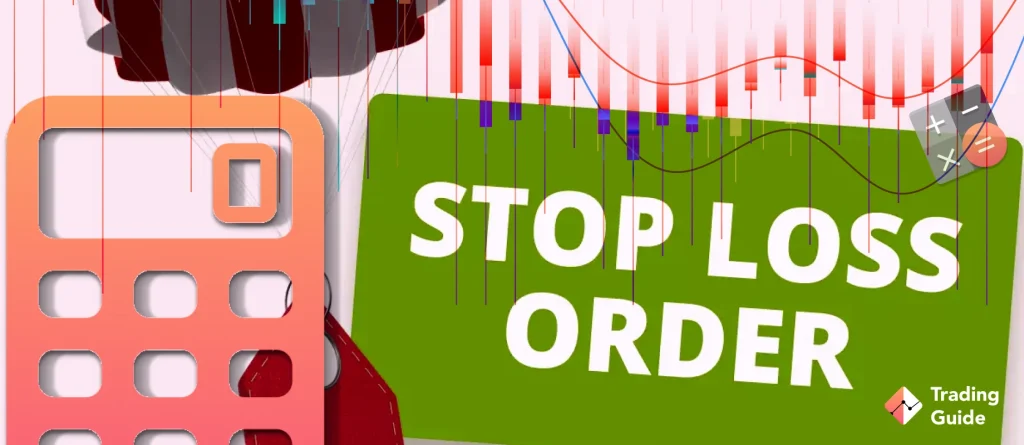There are various trading strategies to help you mitigate losses incurred in a trade and a stop-loss order is one of them. A stop-loss order works by specifying a price at which your open position closes out in case your trading strategy goes against you. As a trader or investor, you must understand how to use a stop-loss order, considering that the financial markets keep experiencing periods of volatility and rapid fluctuations.
Read on to get guidance on what a stop-loss is, types of stop-loss and how to place a stop-loss order. In the end, you should be able to include stop-loss orders in your exit trading strategy, regardless of the assets you trade.
Understanding Stop-Loss Orders

A stop-loss order is a risk management market order that closes an open position once an asset reaches a certain price set by you. This order aims to minimise losses in trade whenever your predictions or speculations go against you.
For instance, if you place a stop-loss order at 15% below the buy price, you will be mitigating the position’s losses by 15%.
Stop-loss orders stay active for as long as you allow them and they can only be closed when it reaches its set level or during a position’s liquidation. You can also cancel a position’s stop-loss order should you feel the need to. The automated element of stop-loss orders prevents you from creating an exit plan since your position will automatically close a specified point. This means that your trading asset will be sold at the next available price.
To effectively set a stop-loss, you need to conduct extensive fundamental analysis, taking into account various elements, including:
- Underlying market conditions
- Likelihood of slippage, which is the difference between a trade’s actual price and the expected price.
In addition, you can set a stop-loss order when there is a bullish uptrend or bearish downtrend in your trading asset. Some traders also set this risk management feature on uncertain markets with solid fundamentals.
Example: An investor purchases 20 shares in company XYZ at a share price of £100. His total investment is £2,000 and decides to set a stop-loss order of £90. However, days after opening the position, the company’s share price begins to fluctuate and falls below the £90 stop-loss. At this point, the set stop-loss order is triggered, closing your position at £89.95. Your loss per share will be £10.05 per share, which is way better than losing your entire investment amount.
Where to Place a Stop-Loss Order

One of the reasons most traders and investors do not use stop-loss orders is because they do not understand the specific places to set them. Note that where to place stop-loss orders will depend on whether you are a long-term or short-term investor. For instance, long-term investors consider placing stop-loss orders below the market price while short term investors do the same above the market price.
All in all, inventors will consider an asset’s financial market, volatility, and historical movement when setting stop-loss orders. It all goes back to knowing how to conduct thorough market analysis using quality tools, which are hosted by top brokers. Simply put, do not place a stop-loss order at a random level.
Pros of Stop-Loss Orders
As mentioned earlier, stop-loss orders help mitigate the amount of losses you would have incurred in a trading position. This risk management control has proven helpful to most traders, especially those trading on margin. Other benefits of using stop-loss orders in long and short-term investments are:
- Stop-loss orders are free insurance policies, meaning they are free to implement, and you only get charged commission once a stop-loss price has been reached.
- It helps in making the best trading and investment decisions, especially for those individuals who believe that an asset price might bounce back after falling. Simply put, your emotions will not cloud your judgement.
- They are useful for traders who cannot monitor the financial markets for extended periods.
- Stop-loss orders can also be used to lock in profits when using “trailing stops”, whereby a stop-loss order is set at a certain percentage level above the current market price (not buying price). We will get into this type of stop-loss order shortly to give you a better understanding.
Cons of Stop-Loss Orders
- A stop-loss price can be activated by short-term asset price fluctuations. To avoid being disadvantaged, pick a stop-loss percentage that prevents a downward risk as possible. This means that you should choose a stop-loss with a tendency of fluctuating at the same rate or more but not less.
- Applying stop-loss orders does not guarantee that your losses will be capped at the desired level. Since a breached stop-loss level will become a new market order, the chances are that the trade may be executed at a price away from the stop-loss limit.
- Stop-loss orders that are set too high may cause unnecessary sales on volatile assets that would have been better held onto.
Types of Stop-Loss Orders

Understanding the types of stop-loss orders and how they work is crucial in helping you effectively manage your investments. There are three types of stop-loss orders, and we list all of them below.
- Basic/Buy and Sell
These are the commonly used stop-loss orders among traders and investors. The buy stop-order lets you set a selling price on short-term positions expecting that an asset’s price will decrease. In contrast, the sell stop-orders apply in long-term positions whereby an asset is bought with an expectation that its value will increase, thus generating profits. In this case, the sell stop-order is set below the current market price and benefit when the market price rises.
- Trailing
A trailing stop-loss order is another popular method of risk management when trading. This stop-loss order can be set in value or percentage and used to stop trade at a fixed amount below the market price.
For instance, when buying an asset and taking a buy position, a trailing stop-loss order will rise with the increasing price of an investment. However, if the asset’s price begins to fall, the trail stop-loss order will remain at its highest, thereby locking in profits. The best element about a trailing stop-loss order is that it caps your positions in case your trading strategy doesn’t favour you.
Keep in mind that a trailing stop-loss order does not guarantee you will exit a position on a set price. Instead, your position will be closed at the next available market price, especially if you experience slippage.
- Guaranteed
A guaranteed stop-loss order guarantees you that trade will close at a particular price you have set without running the risk of slippage. Unlike the buy/sell and trading orders, you will subscribe to a premium package to enjoy the guaranteed stop-loss order. This premium is based on the current market price and in the event that the stop-loss order is not activated. In this case, a full refund will be made.
The best thing about a guaranteed stop-loss order is that anytime you feel like switching to the regular or trailing stop-loss order, you can do so without much hassle.
Calculating Stop-Loss

Calculating a stop-loss order before placing it in an open position is one of the best strategic moves. In addition, You need to decide how much you are willing to lose before setting a stop-loss order in a trade.
Do not place a stop-loss order too close to the current market price since it will be easily triggered. Also, do not put it far away as you will only be risking losing more investment capital. Keep in mind that most assets will lose their value before shooting again to make you profits. For this reason, we advise you to give your open position some room before a stop-loss order kicks in. Ensure the stop-loss order is placed where there are no hopes of recovery.
Simply put, the location where you place a stop-loss order shouldn’t be chosen randomly but strategically. This means that if a trade hits a certain point, you would know that you had made the wrong decision about a market direction.
One rule for calculating stop-loss orders you should know is that losses in every individual transaction should not exceed 2% of your total investment capital.
For instance: A forex trader opens a GBP/USD transaction with a £10,000 capital and one lot as volume. His losses should not exceed 2% of £10,000, making it £200. Since one lot is equivalent to £100,000, one point of price movement will cost $10. In this regard, the trader should place a stop-loss order at a distance of 20 points (200/10) from the position’s opening price.
How to Place Stop-Loss Orders
You need a good broker to place stop-loss orders and mitigate losses. At TradingGuide, we also recommend the best brokers for trading various assets, so consider checking them out. But, of course, the best element about using our recommended brokers is that they also offer you other risk management tools, including take-profit orders, technical indicators, drawing tools, price projection tools, etc.
Here is how to set a stop-loss order when trading using online brokers.
- Using your broker, sign up for a trading account and select the assets you want to trade, whether forex, stocks, CFDs, etc.
- On a broker’s deal ticket, you will find order settings that you will click on and edit to suit your preference. This includes setting your stop-loss in your local currency (£), as a percentage or points.
- Lastly, you will choose the duration of a stop-loss order before expiry and open your position.
Note that having a stop-loss order does not guarantee that your position will automatically close. In this regard, we advise you to invest in the guaranteed stop-loss order and be assured of this risk management tool effectiveness.
Conclusion
Any trader or investor, especially those trading in highly liquid and volatile markets like stocks and currency, can set stop-loss orders on their positions to mitigate losses. However, it is crucial that you fully familiarise yourself with various ways to control your trades and avert losses. You can use a broker’s demo account to try the different types of stop-loss orders and identify a suitable one for you before opening a trading account.
Remember, never place an order randomly without conducting a thorough market analysis to identify the best entry and exit points. That way, you will have an increased chance of having your trades work out per your predictions.



